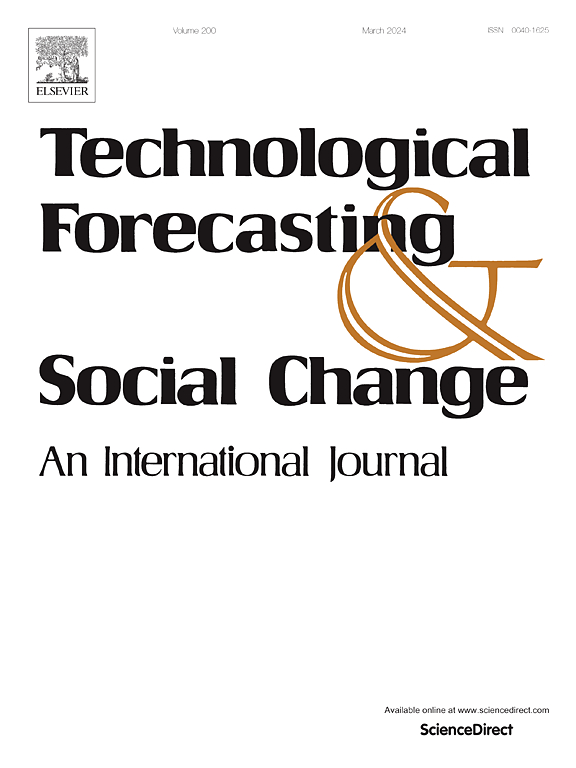基于低碳技术的创新生态系统:价值共创机制与差异博弈分析
IF 12.9
1区 管理学
Q1 BUSINESS
Technological Forecasting and Social Change
Pub Date : 2024-11-05
DOI:10.1016/j.techfore.2024.123852
引用次数: 0
摘要
在全球碳减排趋势下,价值共创机制在构建基于低碳技术的创新生态系统中发挥着重要作用。本研究引入了创新生态系统价值共创的三螺旋分析框架,并构建了一个包含创新者、服务提供者和监管者的三方差分博弈模型。该模型研究了不同博弈方之间的战略稳定性和敏感性条件,并得出以下结论:(1)创新方的战略受服务提供商和监管方综合战略的线性影响,而创新方和监管方对服务提供商的影响是非线性的。(2)在创新生态系统的初始阶段,监管机构扮演着建筑师和控制者的角色。当低成本创新战略和全球创新战略超过一定阈值时,就会触发旨在减少干预的国家创新战略。(3) 财政补贴加速了创新者和服务提供商战略演化曲线的趋同,但也增加了监管机构的成本负担,导致其采取被动管理措施。(4)上层问责制促进三方差异博弈体系从 "混乱 "向 "有序 "演化,中介效应成为影响创新战略选择的主要路径。最后,研究结果表明,以数字技术赋能低碳技术创新、提升绿色服务能力、完善绿色技术评估体系等政策措施可为管理部门的决策提供实证依据。本文章由计算机程序翻译,如有差异,请以英文原文为准。
Innovation ecosystem based on low-carbon technology: Value co-creation mechanism and differential game analysis
In the context of global carbon emission reduction trends, the mechanism of value co-creation plays an instrumental role in the construction of innovative ecosystems based on low-carbon technologies. This study introduces a triple helix analytical framework for value co-creation in innovative ecosystems and constructs a three-party differential game model that incorporates innovators, service providers, and regulators. The model examines the conditions of strategic stability and sensitivity among different game players and makes the following conclusions: (1) Innovators' strategies are linearly influenced by the combined strategies of service providers and regulators, while the effect of innovators and regulators on service providers is non-linear. (2) During the initial stages of the innovation ecosystem, the regulator plays the roles of architect and controller. The NES strategy, aimed at reducing intervention, is triggered when the LCI and GRS strategies exceed certain thresholds. (3) Fiscal subsidies accelerate the convergence of the evolution curves of innovators' and service providers' strategies but also increase the cost burden for regulators, leading them toward passive management measures. (4) Upper-level accountability promotes the evolution of the three-party differential game system from “chaos” to “order,” with the intermediary effect becoming the main route influencing innovation strategy choices. Lastly, the findings suggest that policy measures, such as empowering low-carbon technology innovation with digital technologies, enhancing green service capabilities, and improving green technology assessment systems, may provide empirical evidence for decision-making by management departments.
求助全文
通过发布文献求助,成功后即可免费获取论文全文。
去求助
来源期刊
CiteScore
21.30
自引率
10.80%
发文量
813
期刊介绍:
Technological Forecasting and Social Change is a prominent platform for individuals engaged in the methodology and application of technological forecasting and future studies as planning tools, exploring the interconnectedness of social, environmental, and technological factors.
In addition to serving as a key forum for these discussions, we offer numerous benefits for authors, including complimentary PDFs, a generous copyright policy, exclusive discounts on Elsevier publications, and more.

 求助内容:
求助内容: 应助结果提醒方式:
应助结果提醒方式:


